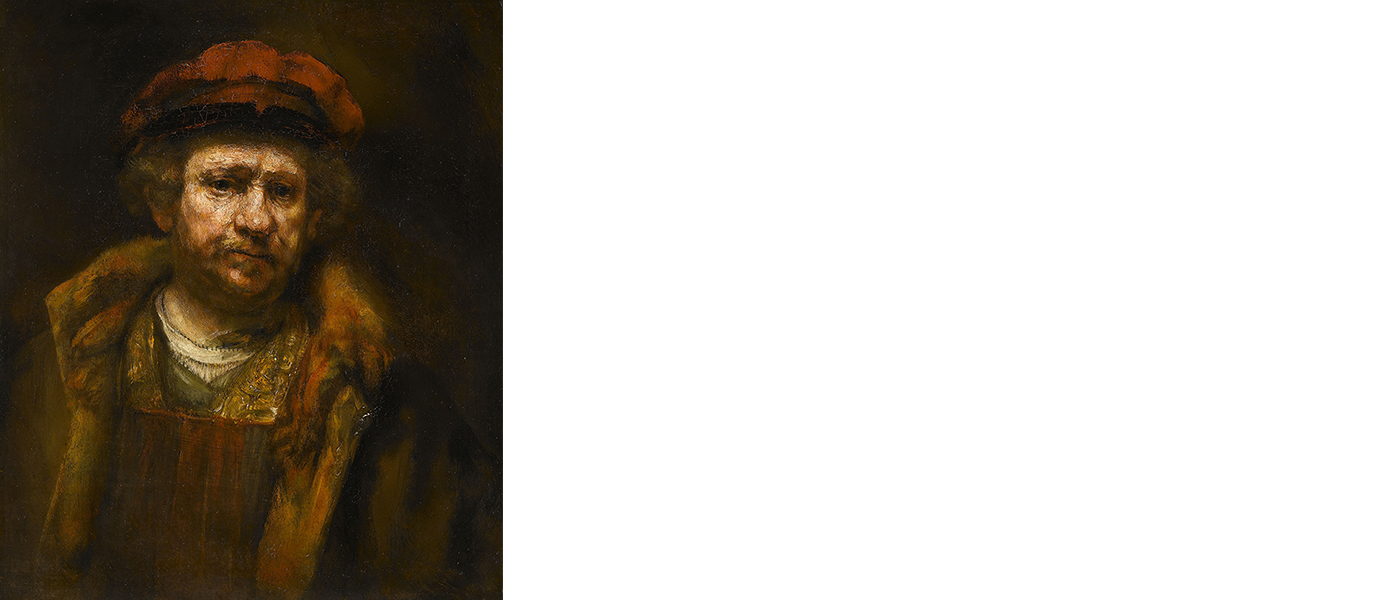Examination of Grounds
In 1961 the Staatsgalerie in Stuttgart bought the painting Self Portrait with a Red Beret by Rembrandt. Shortly after this painting was acquired by the museum, its authorship was questioned. Scientists from different institutions were asked to examine the painting in order to determine its authorship. The German scientist Hermann Kühn conducted sample analysis which established, among other things, that the painting had a ground which contained the mineral quartz.
Before paint layers can be applied to a panel or canvas, the support must be prepared with a coating, starting with applying glue-size followed with the so-called ground. The ground evens out the surface – making the wood or canvas structure less visible, and ensures that the support does not absorb the medium of the paint layers. The ground is also used by painters to set the tone for the subsequent image. By choosing the shade and color of the ground, an artist influences the overall tonal scheme of a painting.

Studio of Rembrandt, 'Self Portrait' of Rembrandt with a Red Beret, c. 1660, canvas, 68 x 56.5 cm, Stuttgart, Staatsgalerie Stuttgart
The ground and subsequent paint layers of a painting can be examined by obtaining a paint sample: a microscopic piece of paint taken from a painting. A paint sample can be mounted in a resin which, once polished, shows the layer structure of the painting in the area sampled under the microscope. The layer structure visible in a sample is usually described in a sample form.

left: Embedded paint sample
center: Rembrandt or Studio of Rembrandt, Reading Monk, dated 166[1?], canvas, 81 x 65 cm, Helsinki, Sinebrychoff Art Museum Finnish National Gallery
right: Light microscopy: capture (born digital), overall (sample), bright field, normal light, 10x (objective), 2016
The importance of Kühn’s find could not be determined because there was too little reference material. This discovery marked the starting point of the systematic examination of grounds in Rembrandt’s paintings by Kühn. His research was continued by the Dutch scientist Karin Groen, who conducted sample analyses on multiple Rembrandt paintings for the Rembrandt Research Project. Both their research and subsequent examination of paint samples by other researchers has resulted in a vast amount of research data – the grounds of some 153 paintings have been examined, providing insight into this specific aspect of Rembrandt’s paintings.
The systematic examination of grounds in Rembrandt’s paintings showed that his grounds can roughly be divided into three types. The first two types were commonly used by 17th-century artists, making it likely that part of the supports bought by Rembrandt were commercially primed.
His panels are often primed with a chalk ground, on top of which a thin light-colored layer of primer, called primuersel, was added. This method was commonly used at the time.

left: Light microscopy: capture (born digital), overall (sample), bright field, 10x (objective), 2016-12-05; Shows the common ground used for panels: white chalk with a light colored imprimatura layer above which a dark paint layer is visible.
right: Rembrandt, Musical Allegory, dated 1626, panel, 63.4 x 47.5 cm, Amsterdam, Rijksmuseum
Part of Rembrandt’s canvasses were primed with a double ground. This second type of ground consists of two colored layers, the first one containing a warm, red/orange, brown or yellow layer upon which a layer with a cooler tone was added. This ground structure can be found in works of other 17th-century painters as well.

left: Light microscopy: capture (born digital), overall (sample), bright field, 20x (objective), 2013-08-14; Shows the double colored ground commonly used for priming canvasses.
right: Rembrandt, Bellona, dated 1633, canvas, 127 x 97.5 cm, New York, The Metropolitan Museum of Art
The third type of ground, a ground solely used on canvas, is a ground which contains a high amount of the mineral quartz. The use of this type of ground was already detected by Kühn while examining the Self Portrait with a Red Beret in Stuttgart. Because of the vast amount of reference material which has been generated since his initial discovery, it is known that this type of ground was only used by Rembrandt and his workshop from approximately 1642 onwards. It was probably first applied in The Night Watch, and from then on incidentally used until Rembrandt’s death in 1669.
Finding a painting with a quartz ground provides a strong supplementary argument for attributing a painting to Rembrandt or painters working in his studio around or after 1640. However, it is important to note that the grounds in paintings by other 17th-century artists have yet to be as thoroughly examined as Rembrandt’s. Groen examined some 60 grounds in paintings by contemporary artists working in Amsterdam from 1640 onwards, without finding a single quartz ground.
While initially finding quartz in the painting Self Portrait with a Red Beret appeared to be an argument against Rembrandt’s authorship, it turned out to be evidence pointing to an origin in Rembrandt’s studio. Although not accepted as a genuine Rembrandt, since 2005 this painting has been generally regarded as a work by someone from his studio.

left: Light microscopy: capture (born digital), overall (sample), bright field, transmitted light, 10x (objective), 2017
right: Rembrandt, Civic Guardsmen of Amsterdam Under Command of Banninck Cocq, also known as The Night Watch, dated 1642, canvas, 363 x 438 cm, Amsterdam, Rijksmuseum
Further reading:
- P. Coremans et. al., ‘Bericht über die naturwissenschaftliche untersuchung des Stuttgarter Rembrandt-Selbstbildnisses’, Pantheon 21 (1963), p. 94-100
- K. Groen, “Grounds in Rembrandt’s Workshop and That of His Contemporaries”, in: A Corpus of Rembrandt Paintings, vol. 4 (2005), p. 318-334
- K. Groen, “Table of Grounds”, in: A Corpus of Rembrandt Paintings, vol. 4 (2005), p. 660-667
- D. Bomford, Rembrandt: Art in the Making, London 2006, p. 27-29
